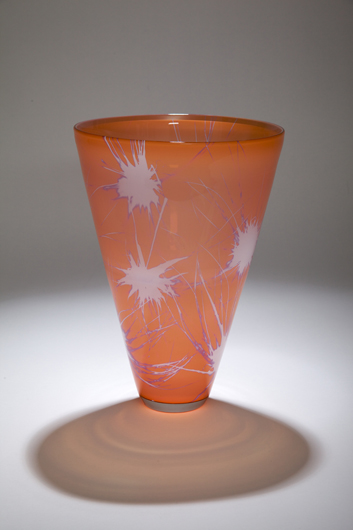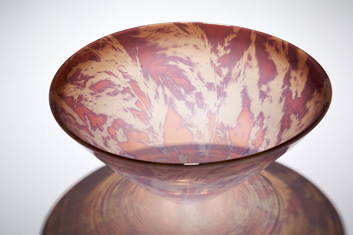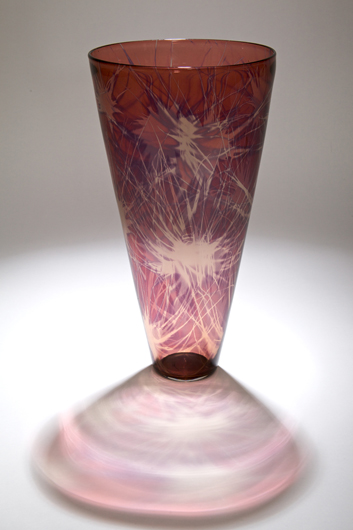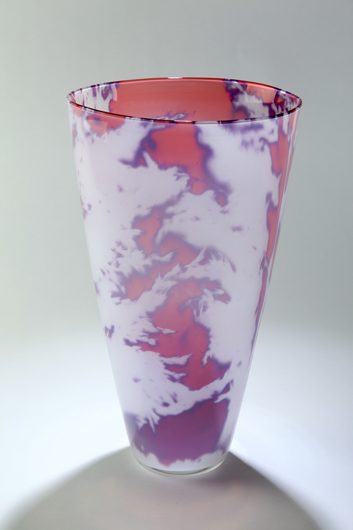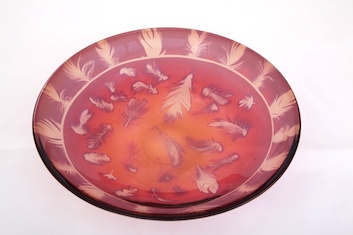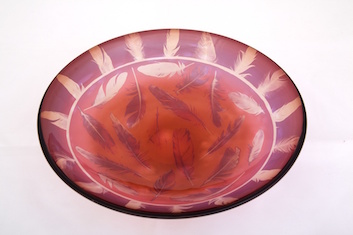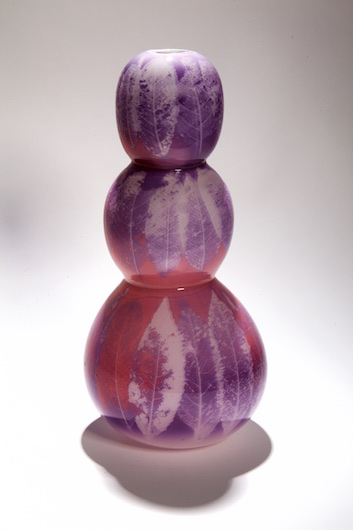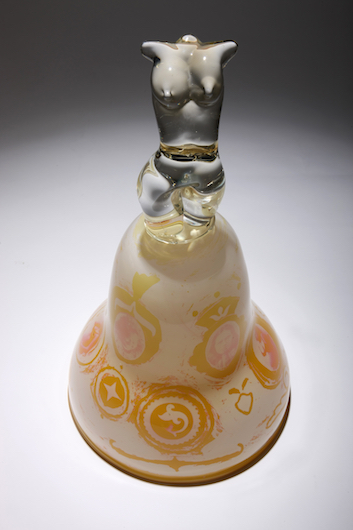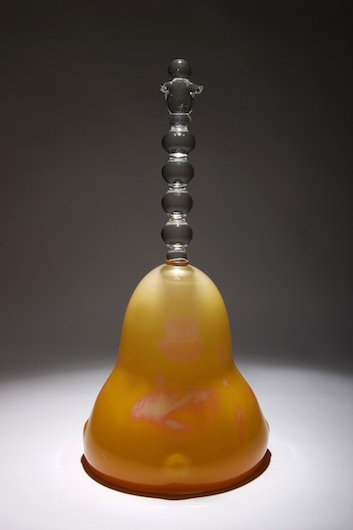Photosensitve Glass
Photosensitive glass is a crystal clear glass in which microscopic particles can be formed into an image by exposure to ultraviolet light. Anything which resists the light can act as a "negative."
The photograph is developed by heating the photosensitive glass at around 560°C for several hours after exposure.
Since the image is inside and actually a part of the glass itself, photosensitive glass is the most durable photographic medium known.
The photographic image is not on the surface of the glass, but internal.
Photosensitive glass was invented in November 1937 by Dr. Donald Stookey of the Corning Glass Works, who handed the recipe to New Zealand based glass colour manufacturers Gaffer Glass, who remain the world’s sole provider of photosensitive glass.
John’s fascination with the material relates back to his passion for printmaking, and he is one of a handful of glass blowers worldwide continuously exploring the possibilities of this extraordinary material.


